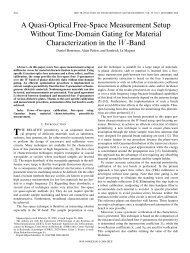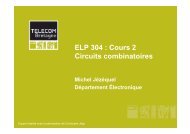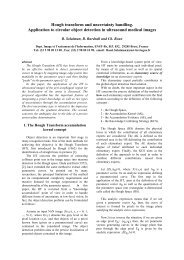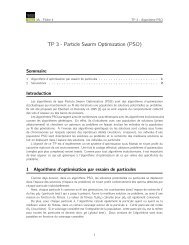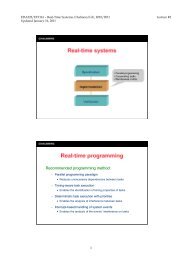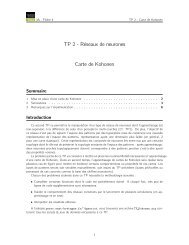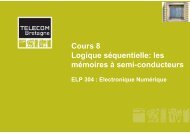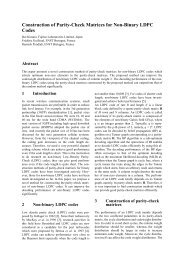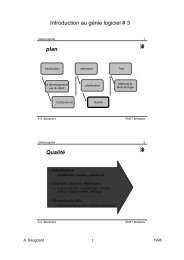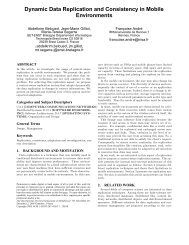REGION-BASED IMAGE SEGMENTATION USING TEXTURE ...
REGION-BASED IMAGE SEGMENTATION USING TEXTURE ...
REGION-BASED IMAGE SEGMENTATION USING TEXTURE ...
You also want an ePaper? Increase the reach of your titles
YUMPU automatically turns print PDFs into web optimized ePapers that Google loves.
]t]{]t{]]t[¨H¨H]{HPq@ HGI 4@ HGJ9KML 6t¨y¦¦‚©¢Œif€yH¢€{f]#{Œ3`(90‚€K©]@ HGJ7‘P 4@ GJ‘’7a]KML 6({ ¡ ;.2. £ ƒ !and updating the segmentation partition according to Eq. © .6. EXPERIMENTAL RESULTS¡ 3(19)We experiment the proposed segmentation method using asfilter response histograms, a set of co-occurrence distributions[5] computed for a displacement of one pixel in the four maindirections ( b-…+£†g‡+…T£¥ˆ+b-…T£ 0 †g‡+… ). The additional term for thisfeature set is expressed as follows:? $Š‰¢^B @A@ C£&+‹ $Œ 1Ž¥ ¢KML“FO+’$DGI@ P$f‘g9QRGPQd‘-S”H“FeO(20)where . ¡ is the translate of . according to the ¥' direction,is the number of gray-levels. Here we quantize the imagewith the k-means algorithm§ © bto and we¡1§Q©£ •¢¥set.As most common methods, level-set functions are chosen`to be the signed Euclidean distance to their zero level-sets.They are updated using gradient minimization techniques andre-initialized using a PDE based approach [7].We initialize f q according to an initial moving-windowsegmentation. Given the set of co-occurrence distributions./estimated on an image window centered at . , pixel . isinitially classified according to the following decision rule:=\./ §˜+š› œŸž=9ZP–d—q(21)§ ]9 q £h ij kFrom this expression, we can notice the appearance of an additionalterm, which is the only one that depends locally on687dN where is the weighted KL distance between co-occurrencedistributions (Eq. ).at site . and texture models C 9¨q./GlMmm onHqpr lds nHtuwv687dN;./



